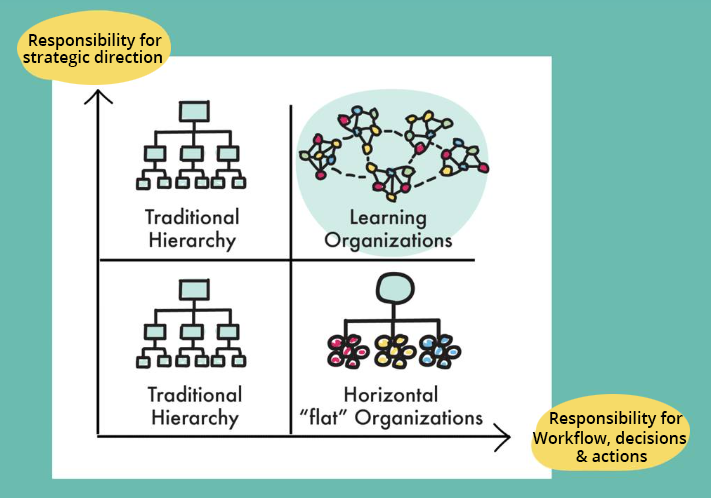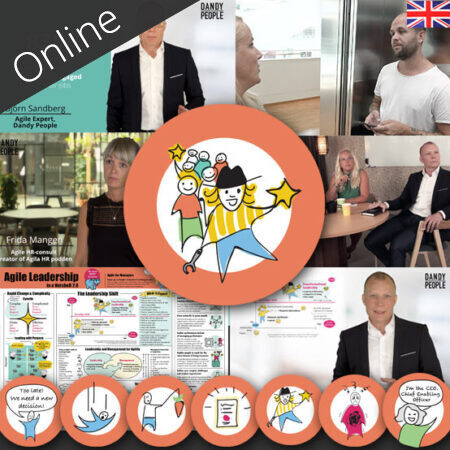Agile transformation is an exploratory work. It’s a change that takes place step by step to constantly improve products, architecture, organization and ways of working. In addition, all parameters are interconnected and affect each other.
The most important success factor in establishing agile on a larger scale, outside a team or a release train, is C-level support to influence the entire system. By the system is meant the total system in the form of organization, technology and people. Even if agile transformation is a gradual change, it will sooner or later impact the whole company, and the executives need to be prepared to make appropriate decisions. Exploratory change can also create confusion and uncertainty among employees, which makes it extra important that decision-makers are confident and supportive.
A C-level executive (CEO, CIO, CPO, CHRO, CFO, CMO etc) is a decision-maker, inspirer and leader of the system in its entirety, and regarded as the “real” change leader. This means that agile coaches, scrum masters, product owners and change leaders should be viewed as catalysts and enablers for change. They are the messengers and doers, based on the direction set by the executives. Managers, other decision makers and teams make decisions in line with this direction.
Success factors for agile transformation, based on what the C-level executives should focus on
- Create a common vision and direction
- Communicate the change
- Lead through others
- Create passion and psychological safety
- Make the necessary decisions
Create a common vision and direction
The C-level executive needs to set a vision and direction for change. What to achieve and why. This should preferably be measurable and produced in co-creation, but the C-level executive needs to own the change.
If it’s a change that affects several organizations, then it’s the managerial level above that sets the objectives, ultimately the CEO if it affects the whole company. Alternatively, the heads of the organizations need to agree on common objectives and avoid conflicting goals. Otherwise there will be conflicts on operational level, with fights about resources, and the development teams being stuck between priorities. .
Tools & methods: Company Bets, Objectives and Key Results (OKR), vision story, message analysis, time machine, storytelling, metaphors
Examples of areas to improve: time-to-market, value flow, number of releases per year, technical modernization (to achieve increased flow, reduced costs, higher quality, security etc)
Communicate the change
Communicate “What” and “Why”
The C-level executive needs to convey the message of “what” to achieve and “why” at conferences, in newsletters and communicate in daily conversations with the same message. They also need to communicate progress and that the change is important.
Executives should have a monthly schedule for the agile transformation. The monthly schedule can include: general meetings, release train meetings, product meetings, strategy days, team visits, visits to scrum meetings, etc. – all to show their support.
Tools & methods : Ask Me Anything (AMA), Big Room Planning (BRP), Management by Walking Around (MBWA), conversations one person at a time, what & why presentation, video, newsletter
Communicate agile values
At the core of an agile transformation are the agile values. The C-level executive needs to constantly refer to the importance of following the values. For example: Asking questions about what we can do today, to improve a little for tomorrow. The importance of delegating and that decisions should be made where the expertise is. The C-level executive should specify which agile values are most important for this particular change.
Celebrate success
When the change is moving towards the objectives of the change, it’s important to celebrate. This is something that executives needs to encourage and sometimes invite to larger celebrations for the organization.
Create passion and psychological safety
Passion for change.
Change, at its best, leads to commitment and passion. Employees who have been waiting for the change, finally see that something is happening. Agile coaches help to create a safe and inspiring environment with the desire to experiment, where it’s okay to make mistakes.
Executives need to support this and pep, inspire and be a transformative leader who is transparent with his or her own change. It’s a great advantage if the personal change is in line with the organization’s. It can be, for example, to become a more servant leader, to delegate more, to ask more compared to giving orders. “Be the change you want to see in the world”.
Tools & methods: Positive psychology, storytelling
Psychological safety
Change can also lead to turbulence and resistance. Agile coaches need to know that there is support for the change, to be able to deal with the storm when it comes. Managers need to be prepared to have challenging conversations and guide employees. Executives need to coach and guide managers, especially those who are reluctant to change. If there are strong opponents to the change, there may be a need for staff changes.
Tools & methods: Active listening, Non-violent Communication (NVC), coaching
(more…)






